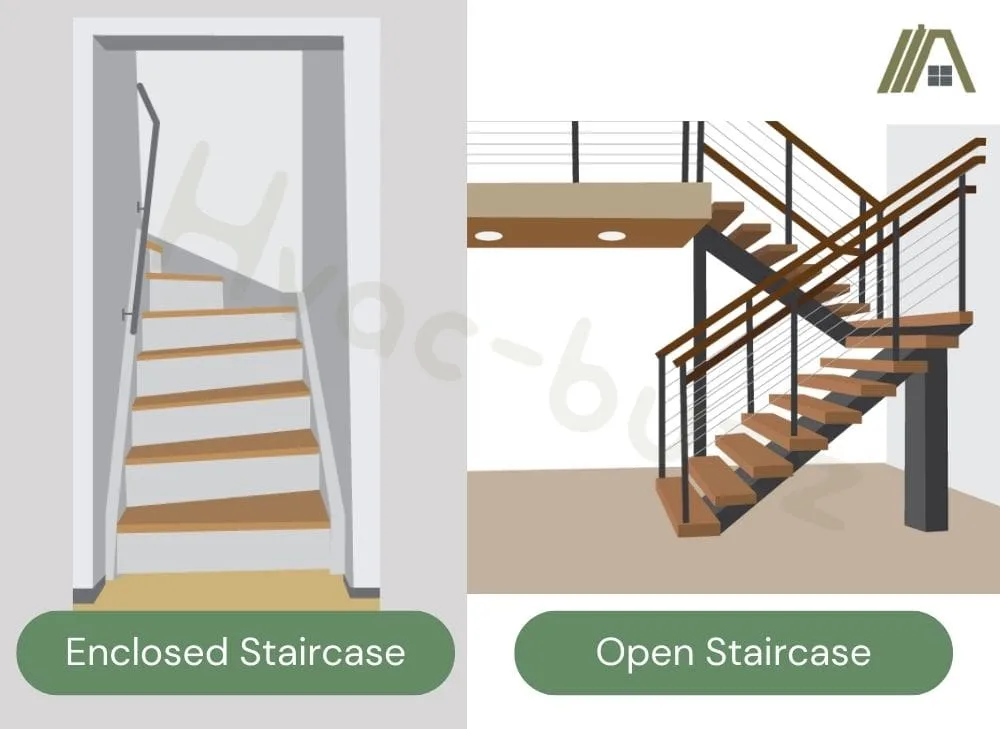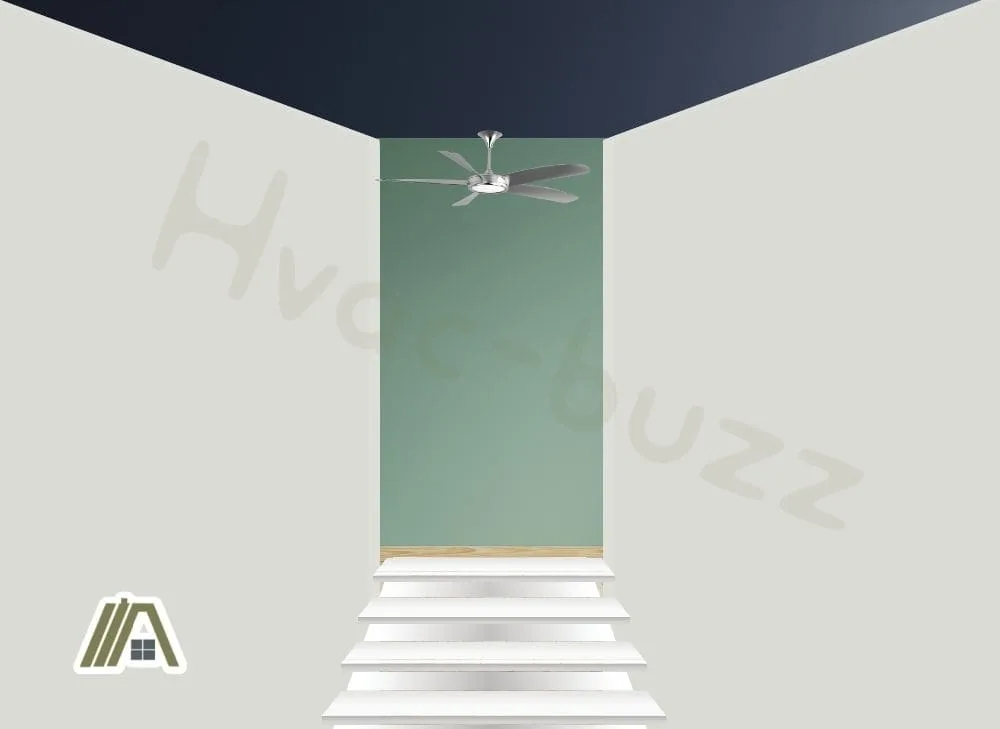I always say that there is no point to a ceiling fan if you don’t sit in the same room as it. This statement is true, but the caveat is that I have been referring to using the fan to cool you in those instances. There is another reason to use a fan.
Ceiling fans can be instrumental in the air circulation system in your home, depending on where they are located. In this role, they are used a little differently than when they are used to cool a room, but they can be beneficial and effective.

In winter, the ceiling fan should rotate counterclockwise (summer mode) to pull hot air down from the upper floors to the lower floors. In summer, the ceiling fan should rotate clockwise (winter mode) to pull cold air up from the lower floors and distribute it to the upper floors.
Purpose of a Ceiling Fan at the Top of Stairs
The primary function of a ceiling fan is to cool the occupants of a room by blowing air over them. Generally, I recommend installing fans in a space that you occupy enough to make use of this.
Stairs are go-betweens. You don’t habitually sit in the stairwell, so technically, there is no traditional cooling benefit of putting a fan at the top of the stairs.
However, that does not mean you won’t get other benefits from installing a ceiling fan there. It’s just not the main function of the fan. At the top of stairs, a fan’s purpose is to help air circulation throughout a multi-story house.
Stairway Ceiling Fan Direction in Winter
In winter, your aim is to evenly distribute warm air throughout the house. You don’t want it all rising and gathering in your attic where it’s of no use to anyone. For a ceiling fan in your stairway to be the most helpful in winter, you should set it to rotate counterclockwise (the summer mode).
In summer mode, the fan’s blades rotate with the highest points of the pitch leading, which results in air being pulled from above the fan (so, from the upper floor), and this air is pushed down through the blades (to the lower floor). This will help to redistribute heat.
Considerations
There are a few factors that will help the stairway ceiling fan to be more effective:
- You should use the fan on a low-speed setting to avoid creating a strong draft. The fan doesn’t need to produce a gust to circulate air through the house, and you will likely find it more pleasant in winter without the added wind chill in the stairway.
- A standard (downrod) mount fan is the ideal model for a stairway fan. Downrod models will perform better than flush mount and hugger fans because they have more space above the blades. More space means more air that can get pulled down.
- This circulation method works better with open staircases that lead to rooms or open landings. Airflow will be hampered by an enclosed stairway that leads to a hallway. The more space around the fan, the more helpful it can be.
- You should turn off the fan before bed to allow the air to concentrate on the upper floors again, where bedrooms are generally located.
Stairway Ceiling Fan Direction in Summer
In summer, you will want to distribute cold air throughout the house. Cold air concentrates on the lower floors of the house, particularly the basement, so you are going to want to move the air upwards. You can achieve this by setting your fan to rotate clockwise (winter mode).
In winter mode, the blades rotate clockwise, meaning that the lower points of the pitch are leading and air is being pulled up from below the fan (the lower levels) and is being pushed out above the fan towards the upper floor.
If your fan is at the top of your basement stairs, this airflow direction can also help prevent the sinking of cold air if you use the AC in the rooms above.
Considerations
There are also some factors to consider when using a fan like this in the summer:
- Once again, a standard mount fan is the best choice over flush and hugger mounts. The extra space above the fan from the downrod means that the updraft can be more effectively distributed, instead of just moving along the ceiling.
- As I mentioned earlier, the fan will work better with open staircases that lead to open areas than enclosed staircases leading to hallways, as there is more room to push and pull air. It will allow the fan to create better airflow.

- When using the fan this way, you will displace heat downward, which may result in the lower areas of the house getting marginally warmer. However, the difference should be small enough that it won’t affect you. In fact, you likely will not even notice it.
- To help the cool air circulate more effectively, you can leave the basement door open. You should also leave the fan running during the night if you wish to benefit from the redistribution of the cool air as you sleep.
Are Stairway Fans Effective?
Your HVAC system may be working less efficiently because of how air collects in different areas of the house.
Installing a ceiling fan in a stairway to aid the circulation of air throughout your house is an excellent way to even out your home’s temperature and thereby help lower your electricity and fuel costs.

In winter, hot air can rise to the upper areas of the house, leaving the downstairs areas (where the thermostat is) cold. Because of the lack of heat distribution, your system can end up working harder. While in summer, cold air from the AC may end up collecting in the lower areas of the house while you are sweltering upstairs.
The fan will help to mix and balance out the different air temperatures in the house so that your thermostat is catering to the average and not to the extreme.
Sources
https://g2art.com/2013/02/19/ceiling-fan-over-a-stairway-a-good-idea/

